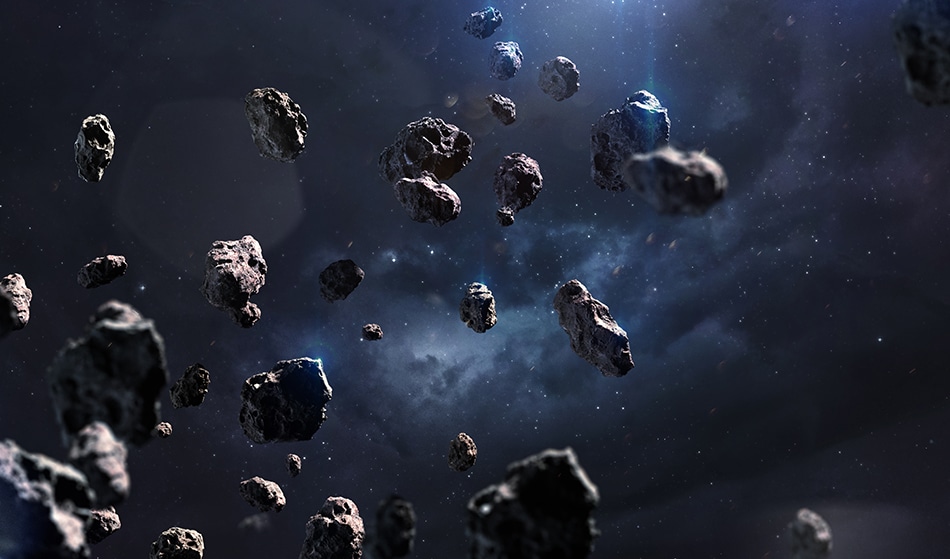Meteorites formed during the birth of the Solar System have helped scientists pinpoint the origin of organic materials necessary for the formation of life on Earth. The finding could also help astronomers explore the possible habitability of planets in other solar systems.

Vadim Sadovski / Shutterstock
Carbonaceous chondrites are meteorites created from chondritic asteroids that are as old as the Solar System. Organic-rich carbonaceous chondrites are especially rare, encompassing only a few percent of all known meteorites. They consist of the first solid materials – rocks, organics, water ice and fine grain dust – formed in the early Solar System 4.5 billion years ago. When discovered on Earth and analyzed, such meteorites can act much like a time capsule; storing essential clues and revealing information to help scientists understand how planets formed and changed over billions of years.
Researchers from the School of Earth and Environmental Sciences at the University of Manchester have spent the past two years studying the isotopic composition of oxygen in organic materials found in chondritic meteorite samples from a collection at the Muséum National d’Histoire Naturelle in Paris, France.
Chondrites are a snapshot of the early Solar System, providing key insights on how protoplanets and planets formed and were processed. Earth is a dynamic planet – processes such as plate tectonics and erosion have erased most of the early Earth records.
Dr. Romain Tartèse, Research Fellow in the School of Earth and Environmental Sciences
This means inclusive studies on chondrites are even more important to help scientists understand how our planet formed and evolved. Dr. Tartèse and his colleagues precisely measured and interpreted the oxygen isotope composition of organic materials in these early chondritic meteorites. Isotopes are atoms of the same element that have the same number of protons but a different number of neutrons. Because they have the same electronic configuration, isotopes have the same chemical properties but different physical properties.
The analysis provided the scientists with an isotopic signature of compounds within the organic material, which acts as a fingerprint of processes involved in its creation. Their results confirmed that organic materials in such asteroids – carbon, hydrogen, oxygen, nitrogen, and sulfur - were probably formed via basic chemical reactions during the early stages of the Solar System.
The findings, published in Proceedings of the National Academy of Sciences of the United States of America (PNAS), suggests that if organic materials can form by basic chemical procedures functioning in our Solar System, then it is conceivable that they are prevalent in other planetary systems too.
The study is the first to provide high-precision triple oxygen isotope analysis of carbonaceous chondrite organics. Whereas most previous studies have focussed on hydrogen and nitrogen, two other building blocks of life that are abundant in organics, Tartèse and his colleagues fixated on oxygen. Oxygen is more prevalent in these meteorites, comprising approximately 10-20% of chondrite organics. It also has three different stable isotopes - hydrogen and nitrogen only have two stable varieties of isotopes – which provides an extra level of information and critical clues to limit the origin or chondritic organics even further.
The oxygen isotope pattern was similar to the relationship linking the composition of the Sun, asteroids and terrestrial planets. Therefore, this likely implies that carbonaceous chondrite organics were formed through chemical reactions in the early Solar System, rather than having been inherited from the interstellar medium.
Dr. Romain Tartèse, Research Fellow in the School of Earth and Environmental Sciences
Disclaimer: The views expressed here are those of the author expressed in their private capacity and do not necessarily represent the views of AZoM.com Limited T/A AZoNetwork the owner and operator of this website. This disclaimer forms part of the Terms and conditions of use of this website.